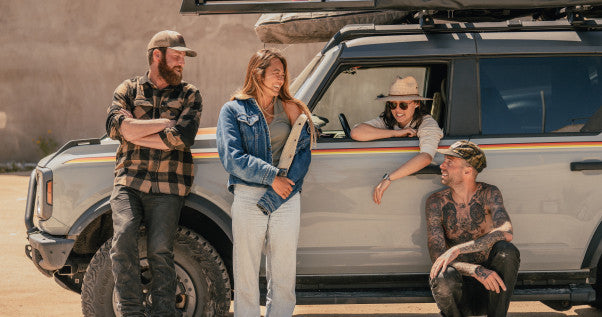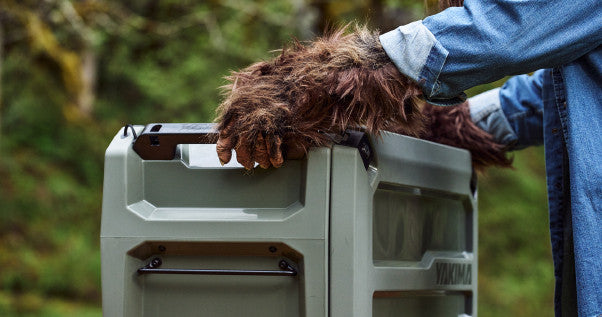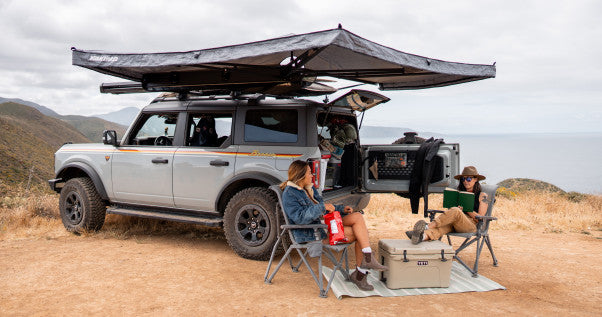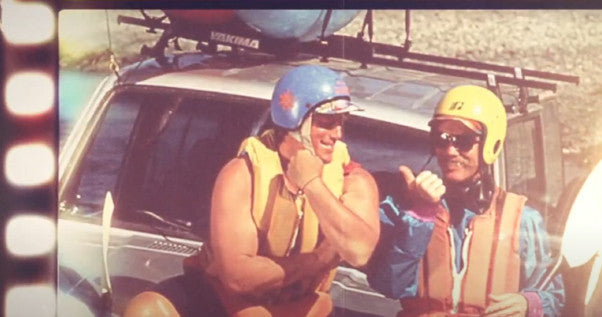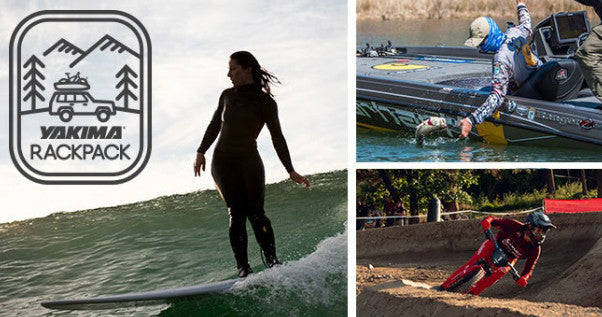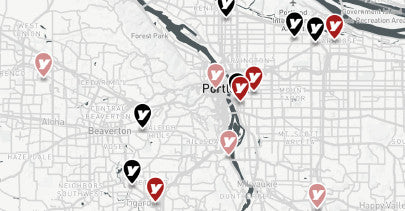To-The-Core
The Outer Banks are a sick place to go camping if you like to fish. We spent three days there this year in early September. We got stuck, ate sand, and tried to catch from kayaks in a tropical storm. This is what it’s like to fish a place for the first time.
It was 5:45 .a.m. in Yucca Village, N.C. We were on the last leg of a long drive—Long Island to the Southern Outer Banks—making one more stop to fuel up before catching a ferry out to South Core Island. The TV behind the counter was broadcasting local weather. Hard rain and gusts of wind at up to 50 miles an hour. We were about to spend the next three days camping on Cape Lookout, catching red drum, flounder, and bluefish off the beach, from kayaks, and trying to sleep in tents.
With me were Field & Stream contributing editor Mike Shea and photographer Tim Romano. Tropical Storm Julia had popped up unexpectedly over Florida two days earlier. The forecast had it heading inland instead of along the coast. But overnight it had taken a U-turn over Georgia. Now it was threatening the beaches we were planning to fish.
Dark clouds coming in from the ocean popped the white ferry terminal in stark relief as we pulled up to the dock. The deckhands moved quickly, glancing at the sky as they helped us with our stuff. We were towing a UTV, with three kayaks on Yakima J-bars and seven fishing rods strapped to its roll bars. Our truck bed held drybags, tents, coolers, tackle boxes, beach wheels, pedal drives, paddles, life jackets, water jugs, and a couple of cases of beer.
Into the StormRead the story: http://fieldandstre.am/ToTheCore #SouthCore
Posted by Field & Stream on Monday, December 12, 2016
Our plan had been to camp at the southern end of the island, exploring and fishing some structure we’d scouted on Google Maps. A long spit of sand called Cape Point jutted out into the ocean there, east of a big sunken jetty and an inlet to the west where deep water came tight to shore. The place seemed a lot like the tidal rivers and back bay systems where I fished at home on Long Island. We’d scout, camp, fish, and repeat until we picked up a bite. We hoped.
The rain and wind cut loose as the ferry pulled out. We crossed Core Sound in a downpour and aired down our tires at the ranger station. A beam of harsh sun cut through the black clouds to the east for a moment. Then it disappeared. “Have fun in those tents!” said a guy driving a camper as he pulled out for the beach.

BEACH WAGONS
The storm had blown our plan into pieces, so we had to think on our feet. There was a cabin complex and a ranger station right where the ferry had dropped us off, and they had one night free due to a cancellation. It cost us $100 for a kitchen, a shower, and four bunk beds, a great deal that made me wish we’d reserved a cabin for the whole trip.
The forecast was calling for Julia to hit with a glancing blow. Bands of storm were crossing on the radar but there were gaps between them that looked big enough to fish. We packed our dry stuff into the cabin and headed out to scout.




This trip was my idea, so I got to drive the Viking. Tim and Mike followed in their comfortable Nissan pickup. At first we tried to ride on the open beach, but the storm was blowing a full-moon tide up to the dunes in places and the wind wanted to flip our UTV. Behind the dunes we were less exposed, but the visor on my helmet didn’t protect my face from the rain.
It took nearly an hour, but by the time we reached the south side of the island the first squall had passed. Cape Point was a thin glint of featureless sand about a half mile long getting pounded by the roaring surf. Through remnant gusts of rain and flying spray we could just make out a couple of campers—tiny white dots way out at its tip. We didn’t want to risk getting stuck out there with the tide coming in, so we headed west instead to see what things looked like at the jetty.
The bottom of the island made a lee in the wind and just behind the jetty was a pocket of calmer water. Small bluefish were chasing schools of finger mullet under a flock of terms. We caught a few on tins from the surf before launching our kayaks to take advantage of the gap in the weather.
Kayak Fishing by UTVRead the story: http://fieldandstre.am/ToTheCore #SouthCore
Posted by Field & Stream on Wednesday, December 14, 2016
The structure at the south end of the island formed a triangle. Its south side was the jetty, a mile-long range of rocks like submerged mountains running west to the edge of a channel. Its west side followed the channel north to the tip of Barden’s Inlet. Its north side was the beach. A wedge-shaped sand flat filled most of this triangle, cut by bowls and sandbars. The best structure seemed to be the rocks, where turbulence had scoured out a 20-foot-wide trough on either side. We were at the top of the incoming tide, and water was straining back through this triangle toward the inlet.
Our kayaks were Hobies equipped with prototype pedal drives that had a cool new feature: Hobie’s old drives only pushed you forward; these new Mirage 180s let you pedal in reverse. Backing up from the undertow came in handy with our noses to the rocks, and we popped small plastics off the bottom until the storm started picking up again. A Spanish mackerel smashed an SP Minnow trolled just behind the breakers on the way back in.
That night we fried hamburgers in our camping pans on the cabin’s propane range and crashed hard to the sound of pounding surf. The weather peaked early in the morning, thunder rattling the empty bunkbeds and rain beating on the thin walls and roof as we gained two grateful hours of extra guilt-free sleep.
By mid-morning the storm had blown to sea. The sky cleared and, even though bands of green still threatened on the radar, we packed up the cabin, drove our gear back down the island, and set up our tents at the jetty.

ALL SMALL FISH
The best fishing came on our last day, which dawned calm, clear, and bright beneath the full moon as we launched behind the jetty. In the early morning we fished the bars and holes along the beach, fighting through clouds of pinfish for a few small blues. Later in the morning we pedaled to the tip of the inlet, where we caught small flounder and toy drum and got soaked by a fast-moving thunderstorm.
Shea and Romano took the truck to shoot photos in the afternoon, after we dried out during lunch back at camp. I hit the jetty on my own. I set up on the south side, facing into the tide, casting a Z-Man shrimp on a ¼-ounce jig from rock to rock to rock as the wind pushed me out toward the channel.
The trick was to bounce the lead down the face of the rocks, or to cast it into the gaps between them and try to swim it back through without hanging up. The fish I caught were all tiny, but they were beautiful—10-inch grouper, black drum, redfish, ladyfish, and bluefish like jewels pulled from the rocks. I didn’t care that they were small. I’d finally found a pattern.

OUT OF TIME
The next morning we got up early and drove to the end of Cape Point. The only way out there was a narrow strip of sand barely wide enough for the pickup. Masses of whitewater were breaking on all sides, a strong sweep south along the beach converging with the current out of Onslow Bay.
One thing we did not underestimate on this trip was driving on the beach. The road behind the dunes on South Core Island was no joke. High clearance was necessary, as was airing down our tires. Out in the surf, soft patches of loose-packed shell lurked below the tideline. It took me, four other guys, and two shovels a half hour to dig out two gentlemen in an old beach wagon that had sunk past its axles into one wet hole. The next day we buried our Viking the same way, but it popped out like a shucked shrimp when our pickup leaned into the towrope.
The EndRead the story: http://fieldandstre.am/ToTheCore #SouthCore
Posted by Field & Stream on Tuesday, December 13, 2016
The rising sun lit a small group of guys gathered at the tip of the point, casting soft-plastic swimbaits on light spinning rods into the converging wash. They weren’t catching, but they looked confident. Their rigs were buttoned up, their gear dialed in. I wished we had more time to watch them, but our ferry back to the mainland was at 10 a.m.
As we loaded our stuff back onto the boat I reflected on what I’d do different if I ever got the chance to come back: I’d reserve a cabin at the ranger station well in advance, where we could set up a base camp for our gear. I’d bring less stuff. I’d come in late October rather than in mid-September. And I’d spend at least a week on the beach—time enough to wait out the weather, meet people, fall in with the rhythm, and find a better bite. The Outer Banks are a sick place for DIY adventure, but you’re not gonna learn them overnight.




